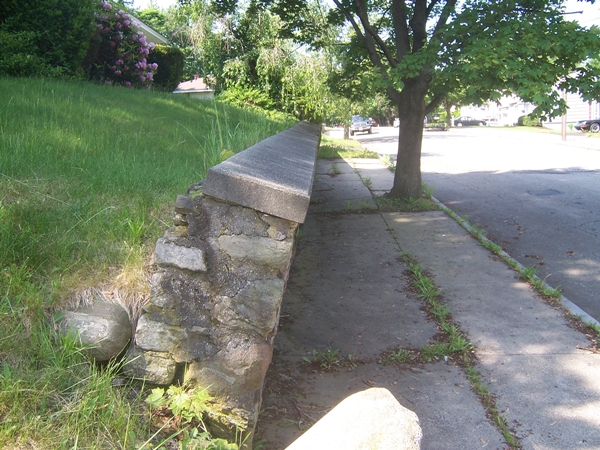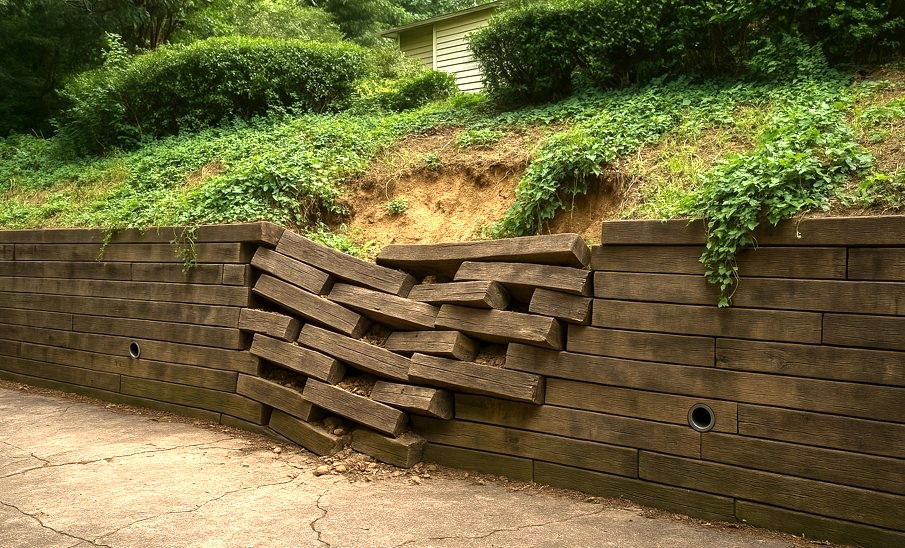Massachusetts Home Inspections YOUR INVESTMENT IS MY CONCERN

Retaining Walls

Retaining walls can be constructed from a variety of materials, including landscape stone, fieldstone, ledge rock, brick, poured concrete, concrete blocks, and even railroad ties. These structures are typically designed to support soil on steep or vertical slopes, helping to prevent the land—and potentially your home—from shifting or sliding downhill.
In addition to stabilizing terrain, retaining walls often serve to address drainage and erosion concerns. Regardless of their specific function, retaining walls represent a significant investment and require regular care to ensure their long-term performance and safety. It’s important to periodically inspect your retaining wall for signs of damage such as shifting, displacement, bulging, leaning, or loose materials. If you discover any loose components or cavities that could lead to structural failure, it’s highly recommended that you or a qualified contractor address these issues promptly. Delaying repairs can result in further deterioration and substantially higher costs down the line.

If your property features timber retaining walls—such as those made from railroad ties (as pictured above)—it’s important to inspect them regularly for signs of internal damage. Over time, Carpenter Ants and Termites can infest these wooden structures, hollowing them out and significantly weakening their integrity. To check for potential issues, periodically probe the wood for soft or hollow areas, especially if the wall has been in place for several years. If an infestation is detected or suspected, the affected sections may need to be replaced.
If you're planning to replace a wood retaining wall, consider upgrading to more durable materials such as landscape stone, poured concrete or other masonry options. These alternatives offer greater longevity, enhanced structural integrity, and typically require less maintenance over time compared to wood. Remember, a retaining wall lacking proper drainage can result in significant and costly repairs down the line.
Drainage and Erosion Protection for Retaining Walls
Ensure that the lower footings of your retaining wall are well protected from erosion, as this can significantly compromise the structure's integrity. One critical feature to check for is the presence of weep holes—small, exposed openings located at the lower outside portion of the wall. These holes typically contain pipes that penetrate through the wall, allowing water to drain from the soil behind it.
Drainage from behind a wall is essential in preventing water buildup, which can lead to pressure, shifting, and long-term damage to a retaining wall. For larger retaining walls, weep holes are commonly 4 inches in diameter to ensure sufficient drainage. Proper spacing between them allows for even water flow across the wall’s base. In certain situations, perforated drainage pipes, typically encased in geotextile fabric or placed in a gravel filter bed, are used to direct water from deeper sections of the backfill to the weep holes. However, not all retaining walls include weep holes. Some retaining walls have perforated piping placed within the aggregate, which channel water around the structure.

If your retaining wall is solid and no weep holes are visible, I strongly recommend consulting a professional landscaper to confirm that your retaining wall has integrated drainage. The absence of proper drainage can result in serious issues, such as heaving, displacement, or leaning of the wall over time due to water retention. During our freezing winter months, the water that gets trapped behind the wall can freeze as temperatures drop. When water freezes, it expands, which can further increase pressure on the wall and lead to cracking or shifting of the wall structure. Conveying water from behind any retaining wall is crucial.
SEE MY CLIENTS FAILED RETAINING WALLS ON GOOGLE PHOTOS
Here is what my clients have to say about my home inspection services:
Press F5 (on your keyboard) for additional testimonials
Hi Dave,
I just wanted to write a quick thank you for your work inspecting 43 1/2 Bartholomew Street in Peabody yesterday. As a buyer in the process of trying to purchase my first home, it's been difficult to know who to trust. I honestly cannot believe some of the stuff I've run into, so I had to write & let you know that I found you professional, competent, & all around above par. In all of the people I've had to deal with up to this point, you were one of the few that actually took the time to explain things in a way that an inexperienced first time home buyer would understand. I never once felt rushed or talked down to.
Based on your inspection, I've decided not to purchase the home at 43 1/2 Bartholomew Street. I will however, continue to look & will hopefully find a house more suited to my needs in the near future. When that happens I will be calling on your expertise once again. In the meantime, I will certainly recommend you to any of my family & friends that may need a home inspection.
Thanks again,
Lisa G.















